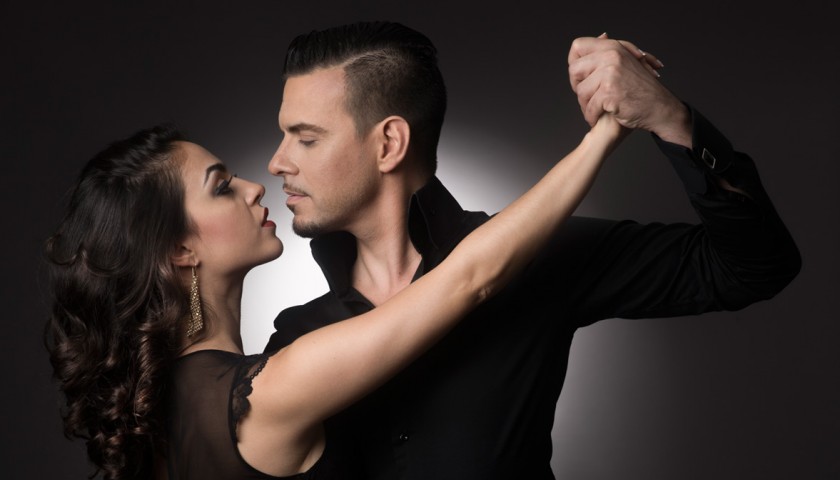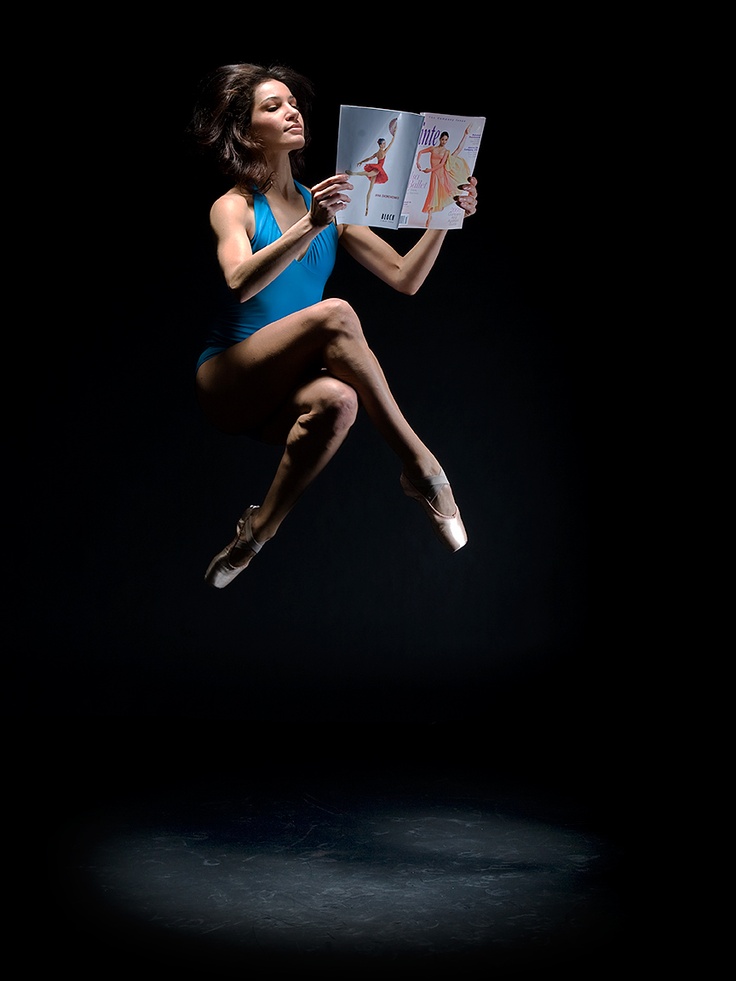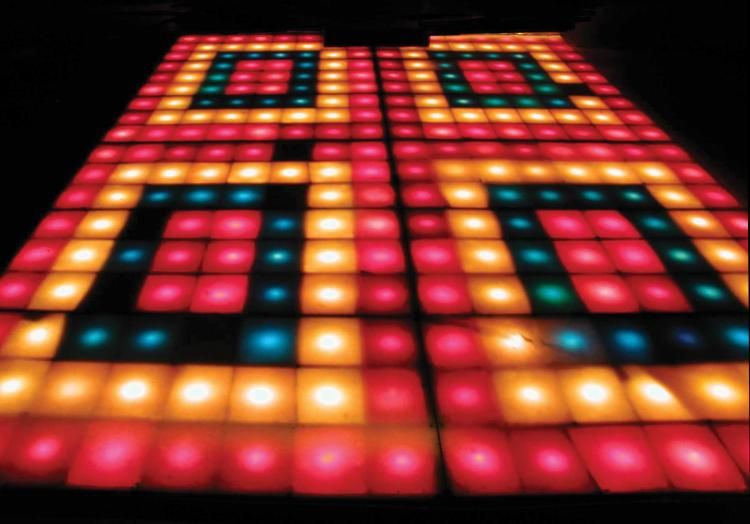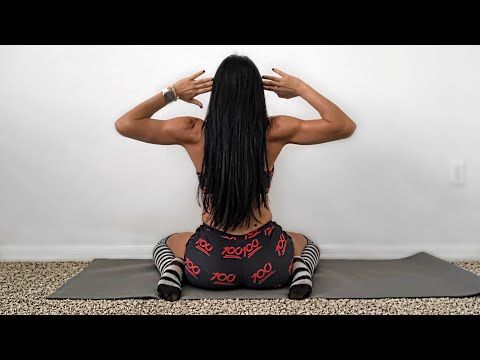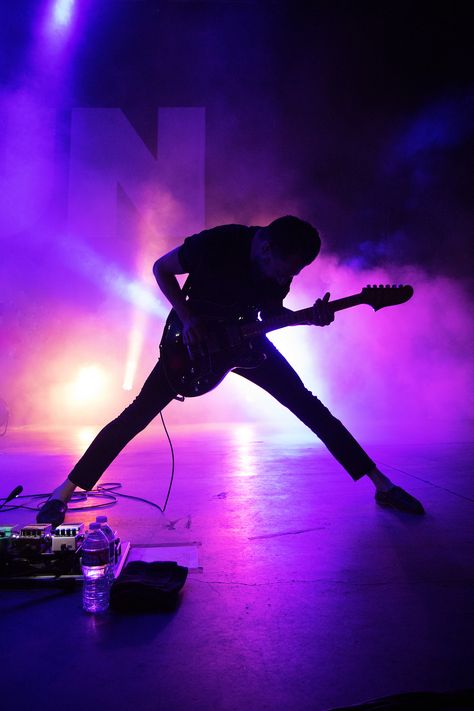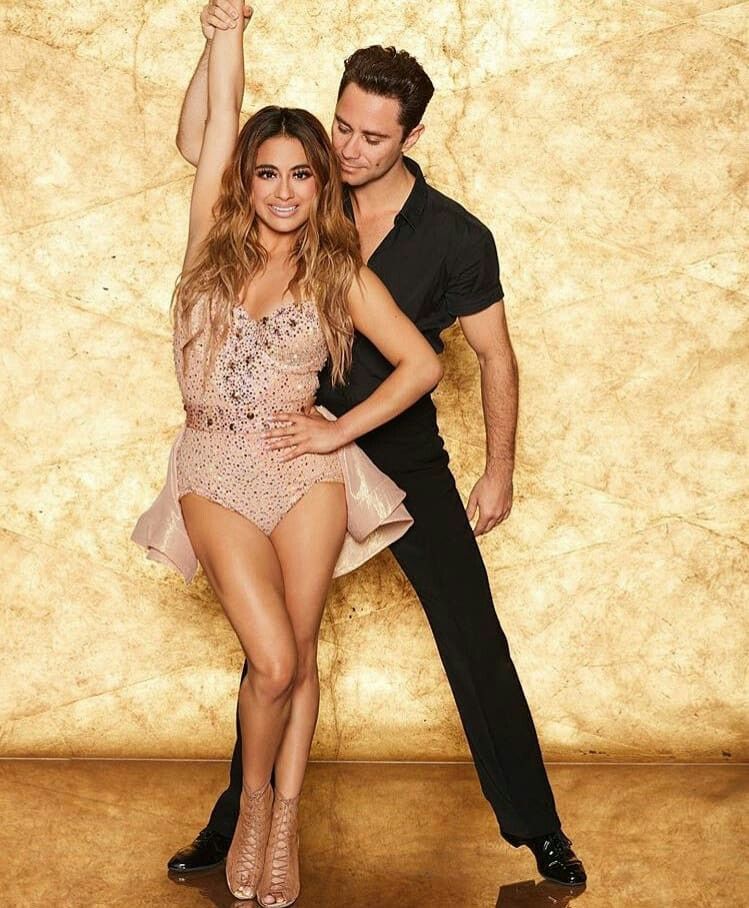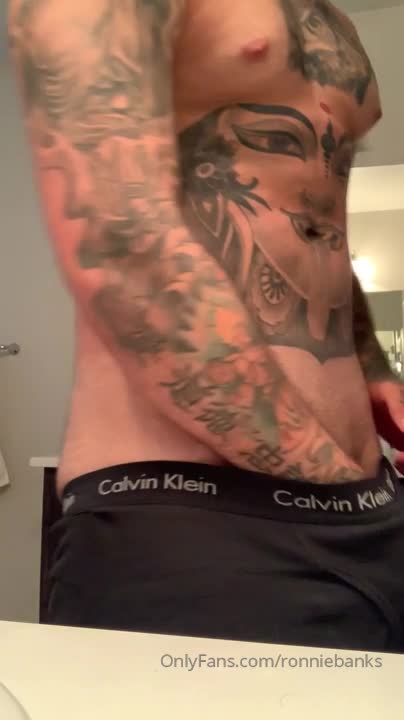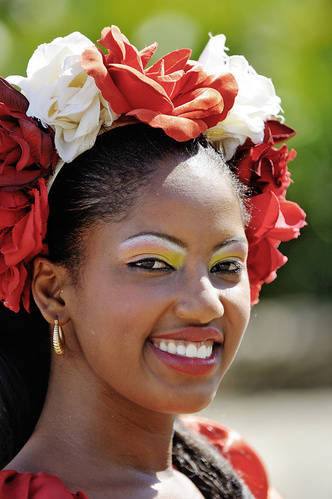How to dance tango video
Learn Basic Tango Steps
Tango, also referred to as the "Dance of Love", is a passionate and dramatic dance. It's a dialogue between partners, an expressive form of communication through movements.
- Basic steps
- Instructions & Diagrams
- Video
- Recommended Video Lessons »
Quick intro
Tango originated in the 19th century outskirts of Buenos Aires, Argentina. Since then it has grown into one of the most popular dances in the world.
It's somewhat different from other dances, especially traditional ballroom, but next in popularity behind waltz and foxtrot. Dissimilar to those two, it has no rise & fall, no swaying. It's known for quick, sharp movements and a catlike walking action.
Today, there are many styles of tango. You can dance the tango argentino, the ballroom tango, the finnish tango, the uruguayan tango, tango nuevo, vintage tango, and the chinese tango, among other styles. Although many different interpretations have appeared, the two main styles are the ballroom style and the Argentine style. The main difference between the two is that the second one has more sharp, staccato movements and the characteristic head snaps which are totally foreign for the dances coming from Argentine.
Tango is danced all around the world by people of all sizes and ages. Because the main requirement is walking, it is a dance for everyone. When it comes to Tango, the Zimbabwean proverb - If you can walk, you can dance – is absolutely on the spot.
Basic steps
Tango is a walking dance, meaning that all the steps are based on walking.
When you start learning it, you must first master some basic movements. Don't worry, basic steps are not that difficult to learn. Beginners usually start with 8-Count Basic or simply Tango Basic.
Tango Basic is made of five steps taken to 8 counts of music. The rhythm is slow, slow, quick, quick, slow.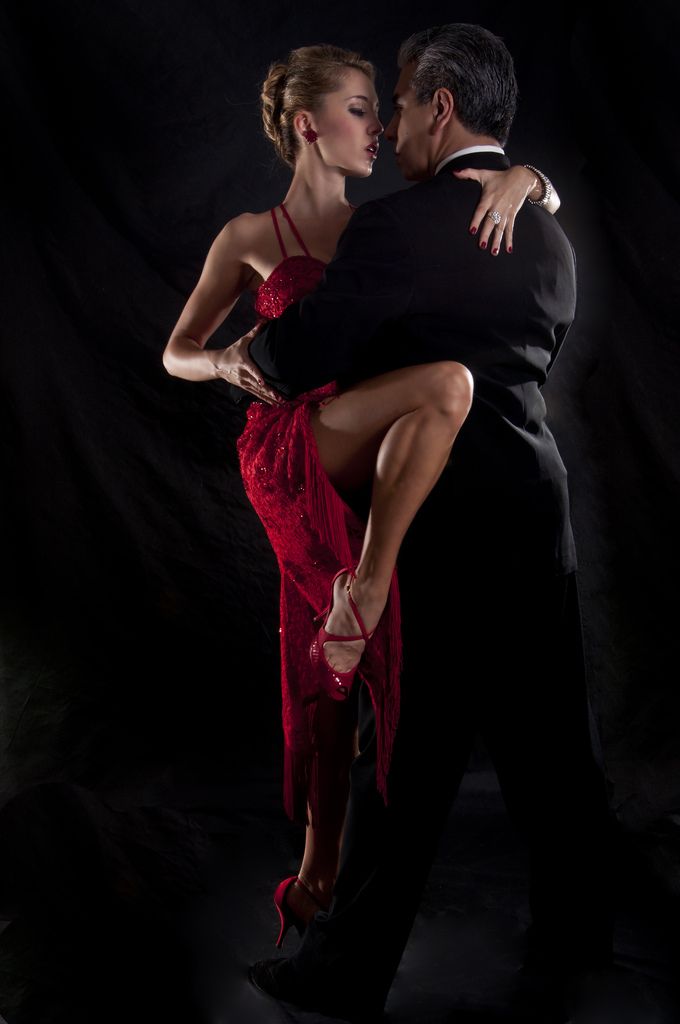 The slow steps consume two beats of music and the quick steps one. Tango music is usually written in 4/4 time (but also in 2/4 time) and played at a tempo of 30-33 measures per minute.
The slow steps consume two beats of music and the quick steps one. Tango music is usually written in 4/4 time (but also in 2/4 time) and played at a tempo of 30-33 measures per minute.
Instructions & Diagrams:
Tango is danced in a closed position, usually closer than in other dances. The man's left hand is holding the lady's right hand. His right hand is placed on her back, along the bottom of her ribcage. The lady's left hand is placed on his right shoulder. You always bent your knees. Remember, this dance is the most bent of all the ballroom dances.
The lead and follow mirror each others steps. The lead begins with the left foot, the follow with the right. Walks usually curve gradually to the left.
Basic Steps for Men
- Step forward with your left foot
- Step forward with your right foot passing the left foot
- Step forward again with your left foot this time passing the right foot
- Step forward and to the right with your right foot
- Left foot close to right foot
Basic Steps for Women
- Step back with your right foot
- Step back with your left foot passing the right foot
- Step back again with your right foot this time passing the left foot
- Step back and to the left with your left foot
- Right foot close to left foot
Video
In the following video Leon and Kim will show you slowly and from all angles how it's done.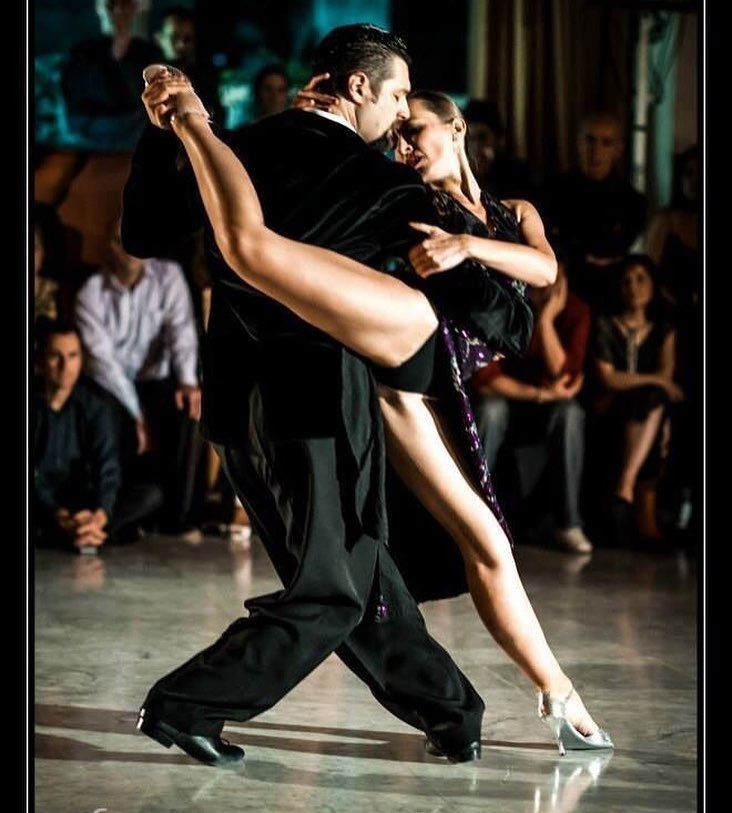 Ready, bend your knees, go:
Ready, bend your knees, go:
more videos »
If you found this lesson useful, you can find more of what we recommend here »
Argentine Tango dance lessons videos
Argentine Tango is a great dance with lots of flair and passion. You will need to develop a good sense of balance and having control of the dance frame is a must. While Argentine Tango stands as its own style it is recommended that you also learn some ballroom dancing to help you with this dance. The dance position in AG is very compact and the foot movements are very small as Argentine Tango does not travel around the dance floor in great amounts.
The different styles of Argentine tango Dancing:
Here is a great introduction of how the different styles of Tango evolved over time and with it the techniques and steps used in this dance.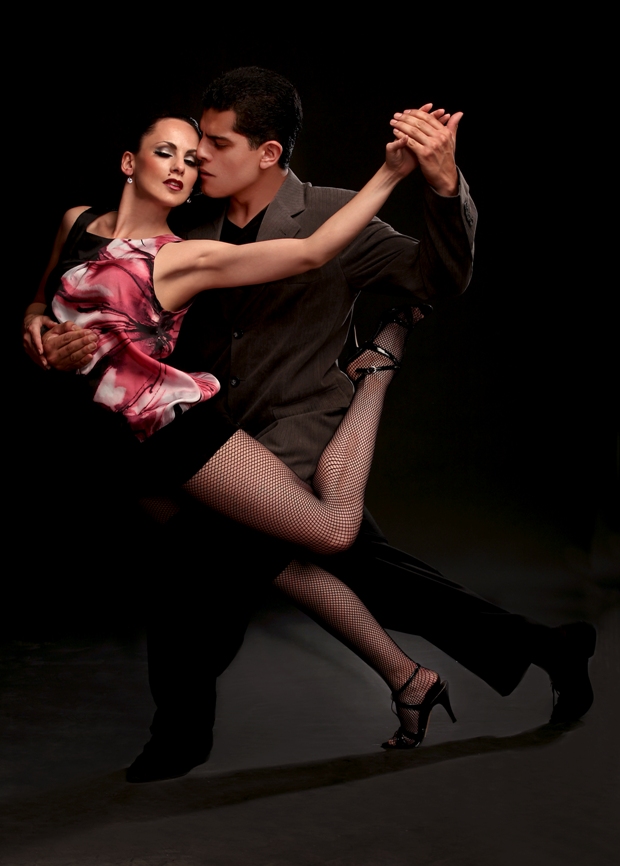
How to dance the Argentine Tango to music
In this video you will learn how to count the Tango. Once you find the down beat of the music you will be able to use different timings to create slower or faster movements. Watch the lesson below:
Argentine Tango dance lessons:
The basic step – Tango 8-Step Basic video lesson:
Here is another video tutorial that shows the steps very clearly. The man’s and lady’s steps are show individually before putting them together.
Some Leading and following tips for Argentine Tango dancing
Learning different Tango moves is just half the battle. You also need to understand how to lead and follow your partner. Argentine Tango is a very social dance that is mostly danced with the man initiating the moves and the ladies following his moves. The man has to indicate the moves from his body by pushing or pulling with his whole frame (not arms). And the ladies have to respond to the leaders lead and prepare their steps in advance.
You also need to understand how to lead and follow your partner. Argentine Tango is a very social dance that is mostly danced with the man initiating the moves and the ladies following his moves. The man has to indicate the moves from his body by pushing or pulling with his whole frame (not arms). And the ladies have to respond to the leaders lead and prepare their steps in advance.
The walking technique Explained:
Photo credit: http://www.tripalbum.net
Walking is basic to most tango step patterns. This makes it easy to get started dancing right away, though there is surprising complexity behind this apparently simple activity. You will learn more about that in each lesson.
For now, start the music, close your eyes, and listen for each major beat. Then begin stepping in place to each major beat. When you feel natural moving to this rhythm, open your eyes and walk around the room, trying to step exactly on those major beats.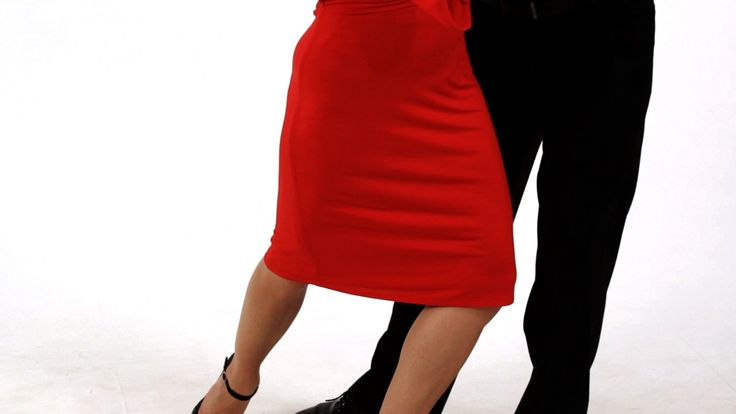 Don’t worry about anything else; just practice this SLOW SLOW rhythm for a few minutes. This rhythm is central to tango, though as you become more expert you’ll learn how to spice up your dancing by varying this basic rhythm.
Don’t worry about anything else; just practice this SLOW SLOW rhythm for a few minutes. This rhythm is central to tango, though as you become more expert you’ll learn how to spice up your dancing by varying this basic rhythm.
Now walk some more. This time, walk counter-clockwise around the outside edge of the floor. This is called the Line of Dance; it helps dancers avoid running into each other. (If other people make it impossible or dangerous to follow the LOD, you may briefly travel against it or even cross the empty center of the floor, then continue the LOD.) Place obstacles in your path to simulate people (or imagine them), then curve your walking to the left or right to go around them.
Tango Dance hold explained:
No other dance connects two people more closely than the Argentine tango, emotionally as well as physically. Part of this is the dance position. You face in the same direction (the woman’s right, the man’s left) and so dance almost cheek to cheek. You also keep your arms around each other for the entire dance.
You also keep your arms around each other for the entire dance.
Take your partner (real or imaginary) in a standard dance position. Keeping your upper body straight, shift your weight onto the balls of your feet. This will push you and your partner very lightly together, helping weld you into a couple.
If you’re a man, pull your partner toward you with your right hand behind her back. If you’re a woman, place your left hand on your partner’s upper arm just above his biceps and push against him. Both pull and push should be as gentle as you can make them and still remain firm.
Extend your other arm (the woman’s right, the man’s left) to the side in the usual ballroom manner. Do NOT let your arm sink like a lead weight, or flop around like wet spaghetti. Instead press very lightly against your partner’s hand. During practice you may want to keep your “balance” hand flat against your partner’s palm rather than clasp it. This way any lapse in pressure will cause your hands to slide apart, giving you instant feedback so you can quickly fix the problem.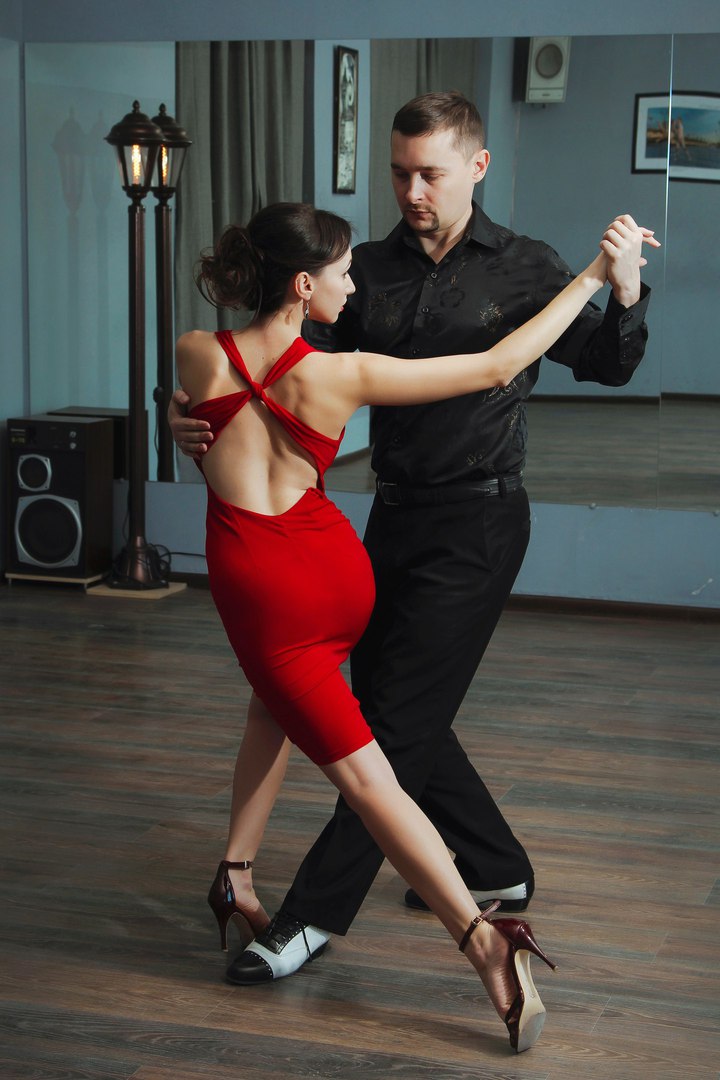
It’s a good idea to practice dancing with an imaginary partner with your arms and hands properly placed. This will strengthen your muscles and habits so that you can keep a good frame without thinking about it.
Did you enjoy this resource?
We have a lot more dance lessons on this website. learn to dance online (Click here) with our videos now.
Fear and magic of tango - advice from the Mamita dance school
Argentine tango is often used as an image of passion. There is something both sexy and deadly about this dance. Balancing on the verge of madness and the highest point of sensuality.
The use of the image occurs to the place and not to the place in rap, rock, bard songs and any artistic work. At the same time, despite the nature of the music or the texts of the words, it is the tango dance that plays the decisive role in perception. To dance the tango is to be super-sensual at its peak.
I'm surprised how actively representatives of the tango community are trying to break such an established stereotype.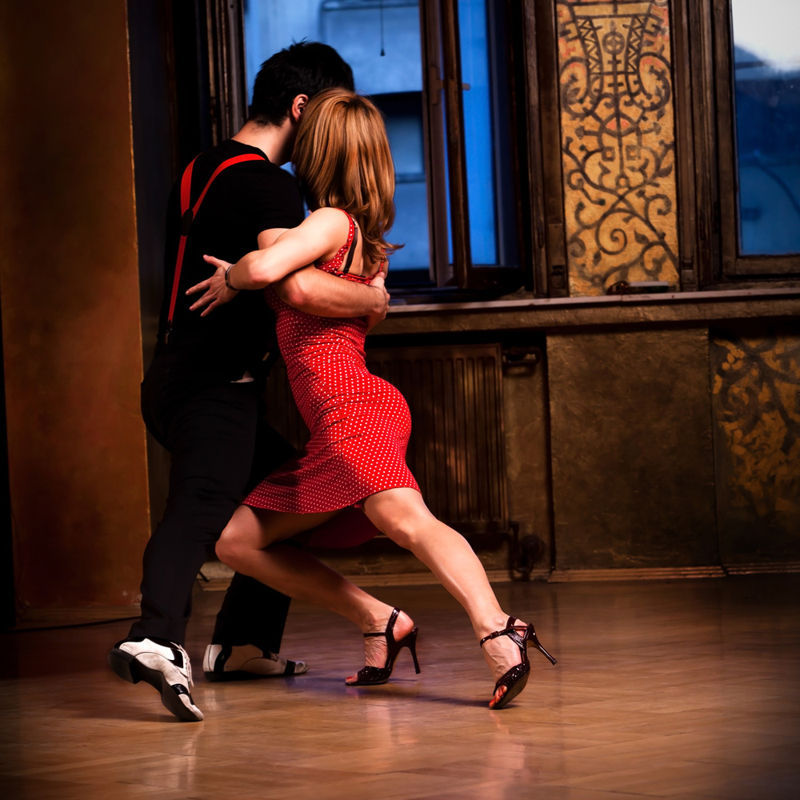 First, Argentine tango is not that sexy and passionate. The embodiment of the image of the dancers fits perfectly into the basic steps and the obligatory ganchos. Secondly, tango is actually very reserved and calm. No sudden movements and beautiful poses. Thirdly, no peak experiences. You have to dance for several hours in a row and properly distribute your forces.
First, Argentine tango is not that sexy and passionate. The embodiment of the image of the dancers fits perfectly into the basic steps and the obligatory ganchos. Secondly, tango is actually very reserved and calm. No sudden movements and beautiful poses. Thirdly, no peak experiences. You have to dance for several hours in a row and properly distribute your forces.
Just in case, I'll make a pointer - sarcasm - in relation to these three points.
As a result, the beautiful spectacular stylization of tango on stage causes contempt among representatives of the pseudo-professional social dance community. The use of neotango elements makes it clear to connoisseurs that the level of technology is insufficient. And excessive passion is a sign of beginners.
Argentine tango in a modern milonga should be dull and sad.
Argentine tango aesthetics
Pair dancing, like any other dance, shows us from the best side. The use of cosmetics does not change the real face when used correctly.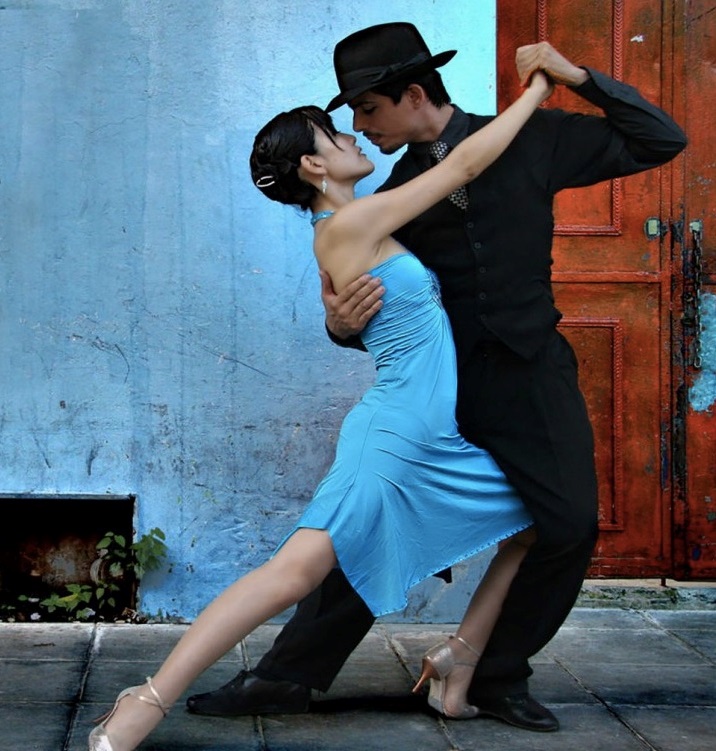 Also, dance places accents where we want and can afford. We put on the image of tango like any costume and begin to feel a different nature of our sensation in the world. Not the costume itself, but our inner world begins to show itself through the image. Tango allows us to do this more expressively than we can afford in real life.
Also, dance places accents where we want and can afford. We put on the image of tango like any costume and begin to feel a different nature of our sensation in the world. Not the costume itself, but our inner world begins to show itself through the image. Tango allows us to do this more expressively than we can afford in real life.
Understanding the aesthetics of beautiful movement, as well as competent speech, is a tool that must be constantly worked on and improved. Being proud of being tongue-tied and proudly sticking out indistinct steps on the dance floor is not a reason for pride. On the contrary, it alienates the tango-inspired from the realities of the milonga.
Modern tango online course
Tango nuevo is the most advanced version of tango. We can quickly learn to dance from zero to a steep level.
| View details |
The reluctance to dance beautifully and spectacularly looks especially strange against the background of close attention to the details of clothes and shoes in the milonga: shoes, dresses, jewelry, etc.
Death tango
Popular image of the last known to many. It is difficult to imagine any other dance in this place so organically. Last salsa? The last waltz?
Indeed, tango can be danced in the end as the last dance, after which the curtain will fall. The texts of both Russian and foreign songs often mention the image of death in tango. To this music, many dancers gladly enter the dance floor and feel something important about themselves and the whole world. Timeless state and real metaphysics literally in 5 minutes in the arms of a stranger. Fans of Heidegger may feel close to the practical application of his transcendence through the experience of horror and the sensation of death. Quite an existential experience for a modern person.
Magical transformation
Many dances have roots in ancient initiation rites. The logic is simple: the current representative of the human race dies, and a new one is born in its place in a new quality. This is how the archaic and ancient code works, which we do not feel and do not understand. Weddings, funerals and birthdays are surrounded by a huge number of rituals in which we accept a symbolic death and continue to live in a new capacity.
This is how the archaic and ancient code works, which we do not feel and do not understand. Weddings, funerals and birthdays are surrounded by a huge number of rituals in which we accept a symbolic death and continue to live in a new capacity.
The organization of the milonga and everything related to the Argentine tango is accompanied by similar symbols and rituals. The result is the same result that underlies all ancient initiations: the transformation of personality.
People come to Argentine tango to grow up. The age in the passport does not mean that a person has left adolescence in his 30s, 40s or 50s.
Illusions and disappointment
Coming to Argentine tango is not enough to change inside. Even a beautiful picture or deep knowledge of technology will not give that admiration or experience when it takes your breath away from what happens to you on the dance floor. Children can put on their mother's make-up, put on a dress with a slit, but all the same, the dance will remain childish or teenage.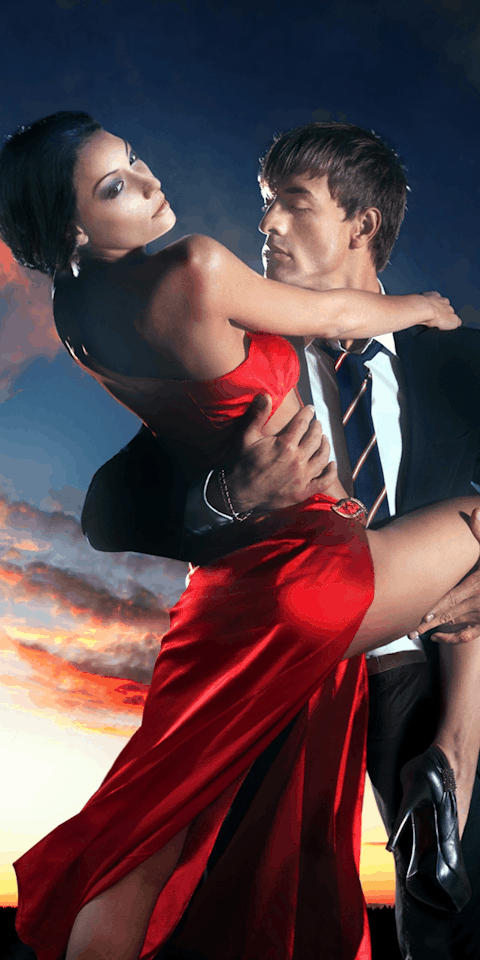 This is the main reason for the disappointment in tango, which goes with the illusion that you have to learn the steps.
This is the main reason for the disappointment in tango, which goes with the illusion that you have to learn the steps.
Transformation often goes through strong resistance and rejection, including oneself. But when the path is passed, a person becomes truly happy.
Argentine tango can be fully called the most adult dance, in which, on an existential level, you touch the issues of life and death, love, passion, meanings and self-understanding. The closeness of another person makes this search deeper and more meaningful.
Those who sometimes find the climax of life in this cannot resist the desire to return to tango again and again.
Share on social networks:
Argentine tango lessons for beginners in Moscow - Mamita dance school
Happiness inside
Dangerous sexuality
Salsa: destroyers of stereotypes as a source of power
Differences between dancing on videos and dancing in movies
Self-destruction of the pair dance community
Salsa TV series as a mirror of the community
Destroying myths about leading pair dance
Does dancing make us better?
12 life hacks to quickly learn how to dance
The seven deadly sins of teachers
Why we will never dance bachata like the Dominicans
Why tango?
Dispute over musicality
Choice of dances according to alcohol preferences
Where to find inspiration for dancing?
Terrible tango nuevo
Distribution of roles in a salsa party
Argentine tango through the eyes of a salsa dancer
Do you have a predisposition to dance?
Which is more effective: individual or group lessons?
Sexual connotations in partner dancing
techniques, basic steps and movements for beginners
Contents
Tango is one of those directions that can be mastered at any age. It is not so much the technical elements that are important here, but the emotions of the performers, their energy and ability to improvise. In the northern capital, tango is especially loved: milongas are regularly held in St. Petersburg - dance parties at professional venues and just in the open air. To help you plunge into the world of Argentinean passions and master one of the most spectacular directions, professional mentors of the La Boca dance club are ready.
It is not so much the technical elements that are important here, but the emotions of the performers, their energy and ability to improvise. In the northern capital, tango is especially loved: milongas are regularly held in St. Petersburg - dance parties at professional venues and just in the open air. To help you plunge into the world of Argentinean passions and master one of the most spectacular directions, professional mentors of the La Boca dance club are ready.
A few words about tango
A playful pair dance is distinguished by its free composition, but at the same time a very clear rhythm. Tango is a popular Argentinean direction that "ripened" at home, and then conquered the whole world. The main thing in this dance is to be able to improvise without losing the rhythm, and to feel your partner. It is in the pair that the individual style of the performers is developed, their own decorations and unique combinations of movements are born. Professional tango performers say that in the first place is the fusion of hearts, and only in the second place is technique.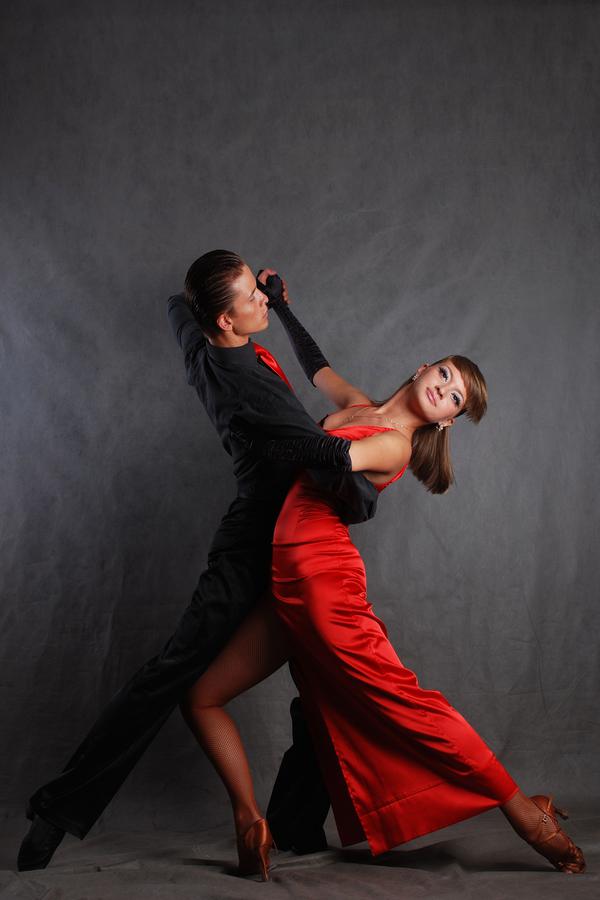 No one ever knows how the dance will turn out in the end, and this is its unconditional dignity!
No one ever knows how the dance will turn out in the end, and this is its unconditional dignity!
Sign up for a trial lesson
Basic tango moves
Due to the fact that tango is suitable for all ages and any physical form, you can start mastering this direction at home. Even before practicing the elements in front of the mirror, you need to really feel the tango music, listen to different pieces and try to swing to them. If you originally started dancing with a partner, learn how to hug in the tango style:
- A man grabs a woman, placing his right hand on her back - just below the shoulder blades.
- The partner's right hand is placed on the partner's left hand.
- The woman also clasps the man with her left hand - the hand is located in the middle of his back.
In tango, it is important to move, mirroring each other. It is optimal to achieve such unity at home, by the mirror.
How to dance tango correctly
Learning tango with the help of a tutorial is very difficult: step by step videos describe the movements, but not the general mood of the dance.